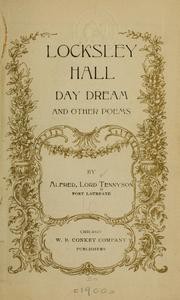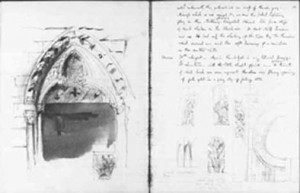Friday, March 2nd
Mary Shelley, Frankenstein (Volume I, pg. 51-110 ). Read the Front Matter (title page, dedication and the 1818 Preface)
See Illustrated Editions and Related Images on the Broadview Website
See Images of Locations on the Broadview Website
See Images of Science on the Broadview Website
Powerpoint Lecture on Frankenstein’s beginnings
Terms: first-person narrator and nested narration
******
Monday, March 5th
Mary Shelley, Frankenstein (Volume II, pg. 111-160)
The Guardian publishes “Mary Shelley’s Frankenstein — in charts” (accessed 19 January 2018)
NPR “See a Famous Monster Come Alive in Frankenstein: The 1818 Text” and “Man As God: Frankenstein Turns 200” (accessed 19 January 2018)
Who is the protagonist of Frankenstein? Support your response with specific evidence from the text.
Wednesday, March 7th
Editor’s Introduction to the Broadview Frankenstein (13-42)
Frankenstein (Volume III, 161-221)
Appendix I: Introduction to Shelley’s 1831 Edition (347-352)
See Fuseli’s Nightmare and Frankenstein on the Broadview Website
Friday, March 9th
Conclude discussion of Frankenstein. We’ll begin with small group discussion of the articles and then move into a full class discussion.
Chose TWO of the following critical essays: print , read, and annotate for credit. All but the Jonathan Culler can be found on the Broadview Press Website.
You’ll find short descriptions of all of the articles on the website, along with a few reading prompts. Choose the 2 essays that interest you the most. The Culler piece is a downloadable PDF and comes from a different source.
John Bugg, “‘Master of their language’: Education and Exile in Mary Shelley’s Frankenstein”
Citation:
Culler, Jonathan. Literary Theory: a very short introduction, Oxford University Press, 1997.
Anne K. Mellor, “Possessing Nature: The Female in Frankenstein”
Hannah O’Connor, excerpt from Queering the Mainstream Monster: Demonstrating Difference and Deviant Sexuality in Shelley’s Frankenstein (1818) and Stoker’s Dracula (1897)
Paul O’Flinn, excerpt from Production and Reproduction: The Case of Frankenstein
Ronald Paulson, excerpt from Gothic Fiction and the French Revolution
You’ll find full citations under “Permissions Acknowledgements” and a sample of how to cite everything but the Culler under “Sample Citation of Online Reference Materials.”
******
Spring Break: March 12th through March 16th
******
Monday, March 19th
 Introduction to the Victorian Period (BABL B 498-539)
Introduction to the Victorian Period (BABL B 498-539)
William Wordsworth, “Steamboats, Viaducts, and Railways” (BABL B: 183)
Thomas Carlyle, from Past and Present: “Midas” and “Captains of Industry” (BABL B: 546-549, 566-569)
OED Definition of the verb “try”
In-class writing: Discuss two rhetorical or narrative techniques employed by Thomas Carlyle in Past and Present. Cite specific examples, with page number, in your response.
Wednesday, March 21st
Excerpts from Contexts: Work and Poverty, Engels, from The Conditions of the
Working Class in England in 1844 (BABL B: 582-586)
Elizabeth Barrett Browning, “The Cry of the Children” (BABL B: 634-636)
Charles Dickens, “A Walk in the Workhouse” (BABL B: 751-754)
Friday, March 23rd
Tennyson, “Ulysses,” and “Locksley Hall” (BABL B 655-656, 661-666)
Glossary: Dramatic Lyric and Dramatic Monologue
******
Monday, March 26th
Browning, “Fra Lippo Lippi” (BABL B 739-744)
How does Robert Browning’s “Fra Lippo Lippi” fulfill the conventions of the dramatic monologue?
1. a single speaker, not the author, who utters the entire poem in a specific situation at a critical moment. Who is the speaker of “Fra Lippo Lippi”? What prompts the poem and when is it set? Please be as specific as possible.
2. the speaker addresses an auditor who never speaks but is manifestly present. Who is the auditor and how does the reader know he is present?
3. the intent of the poem is to reveal the speaker’s underlying motivation, temperament, and character. What does this speaker reveal about himself intentionally and unintentionally?
Wednesday, March 28th
Introduction to the Early Twentieth Century: From 1900 to Mid-Century (BABL 1039-1068)
John Ruskin, “The Storm-Cloud of the Nineteenth Century,” Please print up and bring to class.
Hardy, “Hap,” “The Darkling Thrush” and “Channel Firing” (BABL B 892, 894-895)
Friday, March 30th
Semester Exam: Description to be posted
Second Essay Description (to be posted). We are going to be doing some peer review as part of this essay assignment. You’ll receive paper topics after the exam. A short description of your proposed essay topic, along with an outline, will be due on Thursday, April 5th by 5:00PM. You will need to send it to me and I will then distribute all of the abstracts to your peer review group. I’ll also respond to all of the abstracts.
NEW DUE DATE for the Second Essay is Friday, April 13th by 10:00PM


